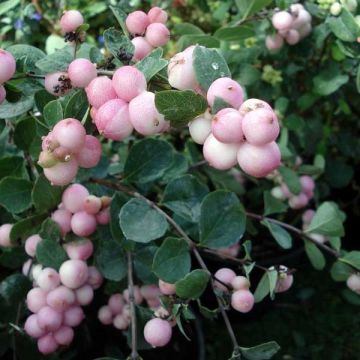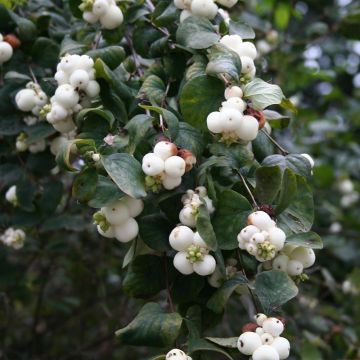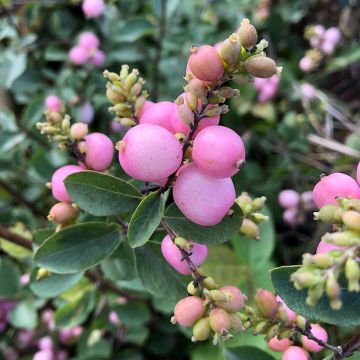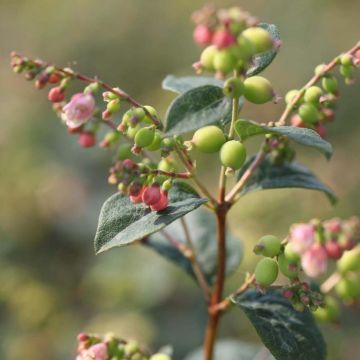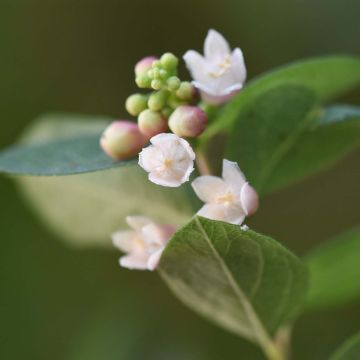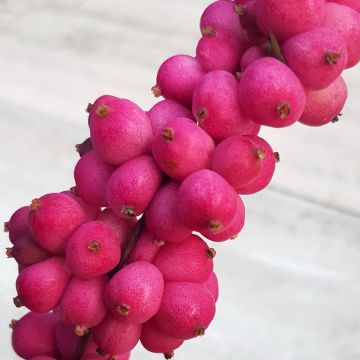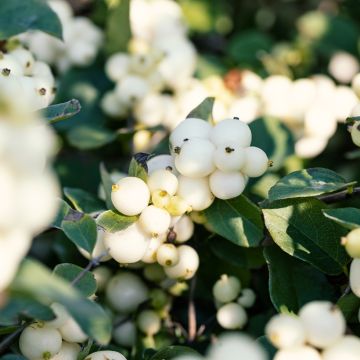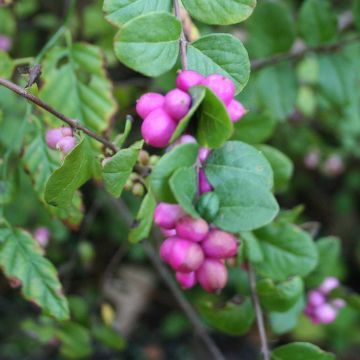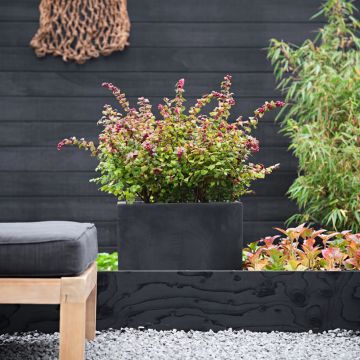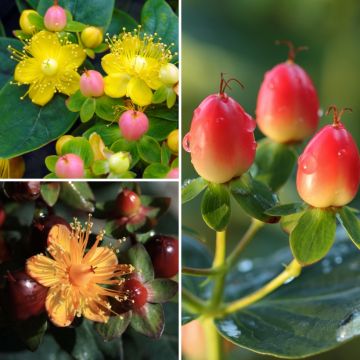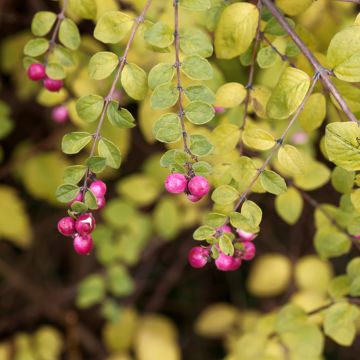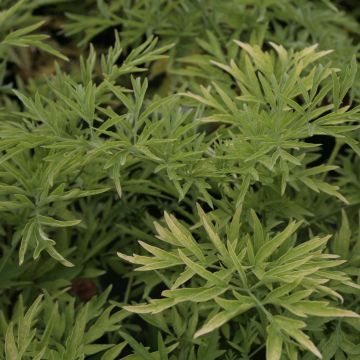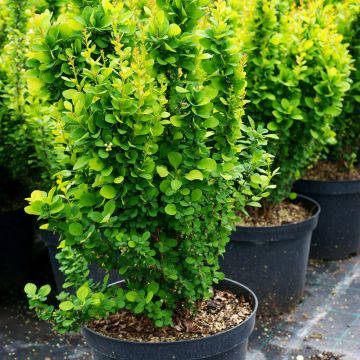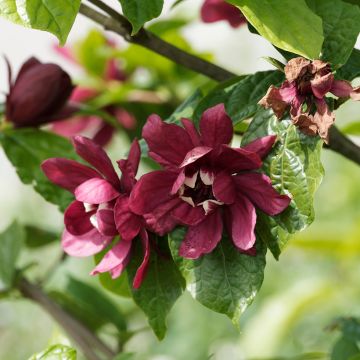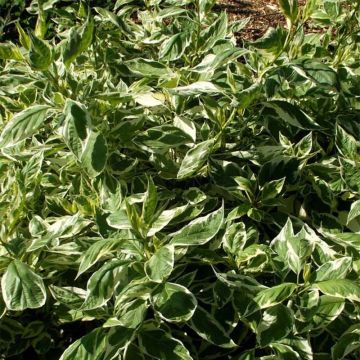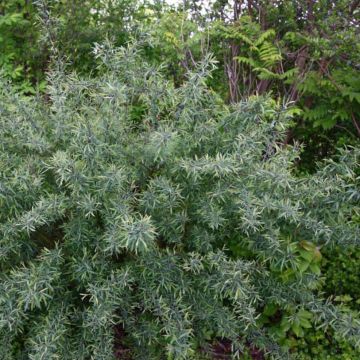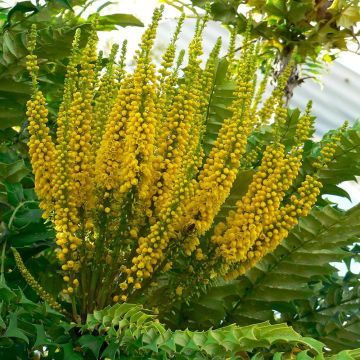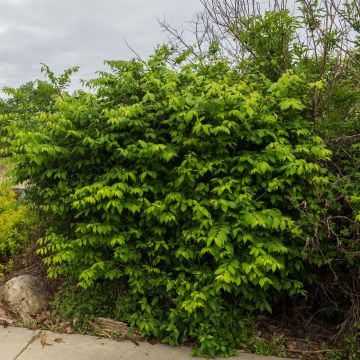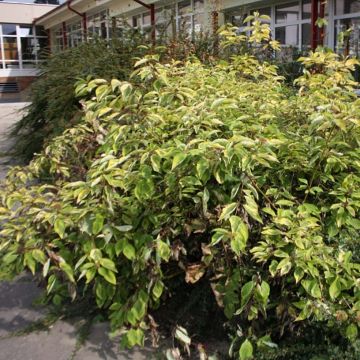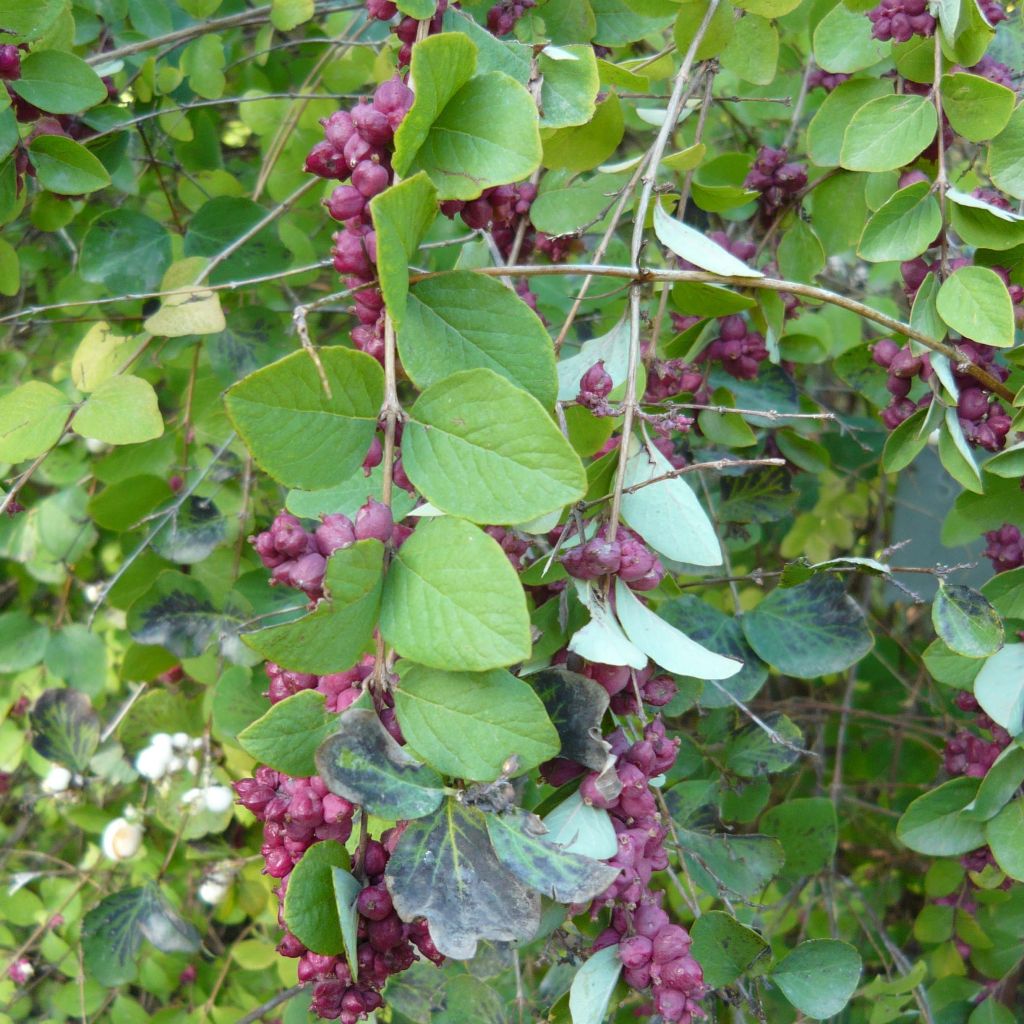

Symphoricarpos orbiculatus
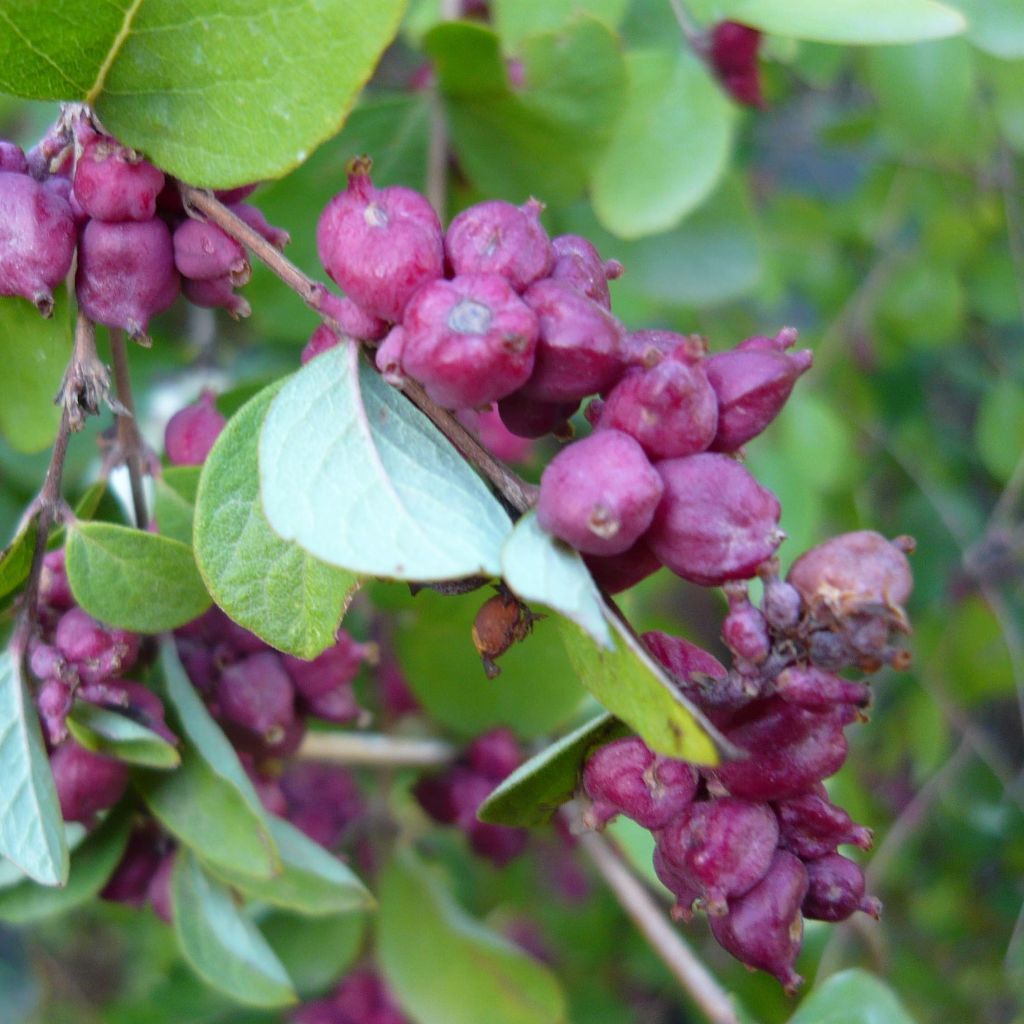

Symphoricarpos orbiculatus
Symphoricarpos orbiculatus
Symphoricarpos orbiculatus
Coralberry, Indian Currant, Buckbrush
Why not try an alternative variety in stock?
View all →This plant carries a 24 months recovery warranty
More information
We guarantee the quality of our plants for a full growing cycle, and will replace at our expense any plant that fails to recover under normal climatic and planting conditions.
From €5.90 for pickup delivery and €6.90 for home delivery
Express home delivery from €8.90.
Does this plant fit my garden?
Set up your Plantfit profile →
Description
Symphoricarpos orbiculatus, also known as the Coralberry, is an extremely robust North American symphorine that grows spontaneously in oak undergrowth, thickets, and on riverbanks where it spreads in large colonies. It is in autumn and winter that this bush is noticed, with its branches covered in tightly clustered berries ranging from coral pink to purple pink. Rarely cultivated, this botanical species that grows even in shade is an excellent plant for informal hedges, hedgerows, or wooded gardens.
Symphoricarpos orbiculatus belongs to the caprifoliaceae family, just like honeysuckles. This species is native to the east and centre of the USA, as well as the centre of Canada and the northeast of Mexico. The plant thrives in soils close to neutral (slightly acidic to slightly chalky), whether they are clayey and very humid or, conversely, quite dry in summer.
It is a deciduous bush with a very bushy, upright but flexible, dense habit, capable of spreading through spontaneous layering, with branches rooting at the nodes when they come into contact with the ground. Its growth is moderately fast, reaching a height of about 1.80 m (6ft) and a width of 1.50 m (5ft) at maturity. The foliage is late deciduous, often turning purplish in autumn before falling. It consists of small oval-rounded leaves, dark green on the upper surface but lighter green on the lower surface. Flowering takes place in the second half of summer, in August-September, in the form of small funnel-shaped, whitish-green, tinged pink flowers appearing in the axils of the leaves. After pollination by insects, they give way to numerous small berries, 6 mm (1in) in diameter, a deep violet-pink when ripe and very decorative.
Symphorines are known for their robustness and beautiful winter fruiting. This one will be appreciated for its ease of cultivation in shade, its rustic character, and its highly colourful fruiting. It easily integrates into an informal hedge or a large shrub border without pretension, in a wildlife garden. Many other deciduous or evergreen shrubs, with flowers or berries, will accompany it: spireas, dogwoods, viburnums, lilacs, shrubby honeysuckles, cotoneasters, elaeagnus, wild roses, euonymus, ornamental cherries and apples, hawthorns, Berberis...
Report an error about the product description
Symphoricarpos orbiculatus in pictures
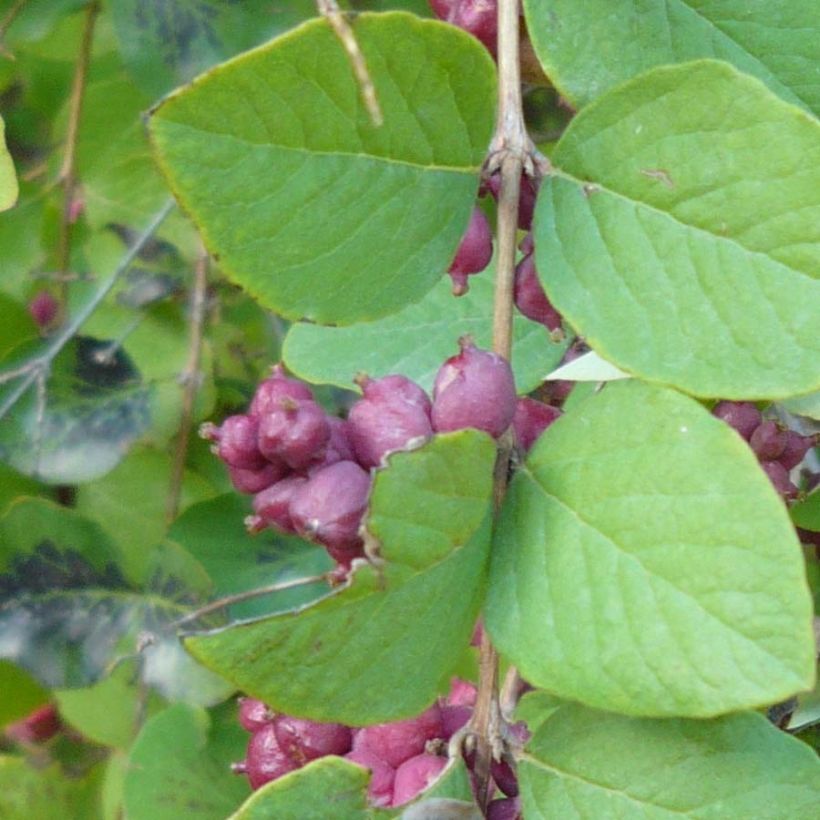

Plant habit
Flowering
Foliage
Botanical data
Symphoricarpos
orbiculatus
Caprifoliaceae
Coralberry, Indian Currant, Buckbrush
North America
Other Symphoricarpos
Planting and care
Symphoricarpos orbiculatus adapts to almost all exposures: it tolerates shade well but will be more floriferous and fruitful in partial shade or non-burning sun. It is a hardy and easy-to-grow bush that is suitable for any balanced garden soil, i.e. neither too acidic nor too chalky. It even accommodates clayey and humid soils or, conversely, dry and root-filled soils that are found under large trees and at the base of hedges. You can prune for balance at the end of winter.
Planting period
Intended location
Care
This item has not been reviewed yet - be the first to leave a review about it.
Hedge shrubs
Haven't found what you were looking for?
Hardiness is the lowest winter temperature a plant can endure without suffering serious damage or even dying. However, hardiness is affected by location (a sheltered area, such as a patio), protection (winter cover) and soil type (hardiness is improved by well-drained soil).

Photo Sharing Terms & Conditions
In order to encourage gardeners to interact and share their experiences, Promesse de fleurs offers various media enabling content to be uploaded onto its Site - in particular via the ‘Photo sharing’ module.
The User agrees to refrain from:
- Posting any content that is illegal, prejudicial, insulting, racist, inciteful to hatred, revisionist, contrary to public decency, that infringes on privacy or on the privacy rights of third parties, in particular the publicity rights of persons and goods, intellectual property rights, or the right to privacy.
- Submitting content on behalf of a third party;
- Impersonate the identity of a third party and/or publish any personal information about a third party;
In general, the User undertakes to refrain from any unethical behaviour.
All Content (in particular text, comments, files, images, photos, videos, creative works, etc.), which may be subject to property or intellectual property rights, image or other private rights, shall remain the property of the User, subject to the limited rights granted by the terms of the licence granted by Promesse de fleurs as stated below. Users are at liberty to publish or not to publish such Content on the Site, notably via the ‘Photo Sharing’ facility, and accept that this Content shall be made public and freely accessible, notably on the Internet.
Users further acknowledge, undertake to have ,and guarantee that they hold all necessary rights and permissions to publish such material on the Site, in particular with regard to the legislation in force pertaining to any privacy, property, intellectual property, image, or contractual rights, or rights of any other nature. By publishing such Content on the Site, Users acknowledge accepting full liability as publishers of the Content within the meaning of the law, and grant Promesse de fleurs, free of charge, an inclusive, worldwide licence for the said Content for the entire duration of its publication, including all reproduction, representation, up/downloading, displaying, performing, transmission, and storage rights.
Users also grant permission for their name to be linked to the Content and accept that this link may not always be made available.
By engaging in posting material, Users consent to their Content becoming automatically accessible on the Internet, in particular on other sites and/or blogs and/or web pages of the Promesse de fleurs site, including in particular social pages and the Promesse de fleurs catalogue.
Users may secure the removal of entrusted content free of charge by issuing a simple request via our contact form.
The flowering period indicated on our website applies to countries and regions located in USDA zone 8 (France, the United Kingdom, Ireland, the Netherlands, etc.)
It will vary according to where you live:
- In zones 9 to 10 (Italy, Spain, Greece, etc.), flowering will occur about 2 to 4 weeks earlier.
- In zones 6 to 7 (Germany, Poland, Slovenia, and lower mountainous regions), flowering will be delayed by 2 to 3 weeks.
- In zone 5 (Central Europe, Scandinavia), blooming will be delayed by 3 to 5 weeks.
In temperate climates, pruning of spring-flowering shrubs (forsythia, spireas, etc.) should be done just after flowering.
Pruning of summer-flowering shrubs (Indian Lilac, Perovskia, etc.) can be done in winter or spring.
In cold regions as well as with frost-sensitive plants, avoid pruning too early when severe frosts may still occur.
The planting period indicated on our website applies to countries and regions located in USDA zone 8 (France, United Kingdom, Ireland, Netherlands).
It will vary according to where you live:
- In Mediterranean zones (Marseille, Madrid, Milan, etc.), autumn and winter are the best planting periods.
- In continental zones (Strasbourg, Munich, Vienna, etc.), delay planting by 2 to 3 weeks in spring and bring it forward by 2 to 4 weeks in autumn.
- In mountainous regions (the Alps, Pyrenees, Carpathians, etc.), it is best to plant in late spring (May-June) or late summer (August-September).
The harvesting period indicated on our website applies to countries and regions in USDA zone 8 (France, England, Ireland, the Netherlands).
In colder areas (Scandinavia, Poland, Austria...) fruit and vegetable harvests are likely to be delayed by 3-4 weeks.
In warmer areas (Italy, Spain, Greece, etc.), harvesting will probably take place earlier, depending on weather conditions.
The sowing periods indicated on our website apply to countries and regions within USDA Zone 8 (France, UK, Ireland, Netherlands).
In colder areas (Scandinavia, Poland, Austria...), delay any outdoor sowing by 3-4 weeks, or sow under glass.
In warmer climes (Italy, Spain, Greece, etc.), bring outdoor sowing forward by a few weeks.

































